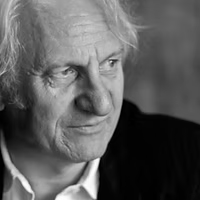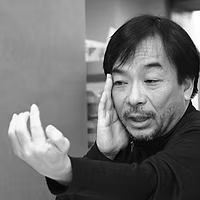

To discuss and address the interdependencies between arts, sciences and technologies, and the challenges between ideas of the expanded field of interactive arts

Towards an Expanded Hermeneutics
The humanistic discipline which helps us to understand and to interpret thoughts and ideas articulated in language is called hermeneutics. To deal poetically and critically with articulations, which have been co-generated or even completely produced by machines we need an expanded hermeneutics. It is not enough anymore to think with images, diagrams, sound, text as epistemic instruments. Instead we have to learn and teach the new alphabet of complex forms of articulation and understanding. Within this new field of acting and thinking for artists, philosophers and other intellectuals DIALOGUE is becoming a decisive paradigm - dialogue between men and machines, between the objects both are generating, between programmes and machines themselves.

Media such as paper and pencil or, photographs and prints have been contributing to externalize human
memory. In this way, humans have come to deal with a large quantity of information beyond the limits of our
body. Up until now, the handling information centered on letters but, with the rapid advancement of digital
technology, we are beginning to be able to handle images at the same speed as characters.
As the creation and distribution of images used require a large investment, image media, such as television,
has been centralized by huge capital investment. However, the advent of digital technology has reversed this
and individuals have gained opportunities to handle images and to be distributors now.
Unfortunately, this new literacy to deal with image has not yet been born. As you can see from the history of
film, the development of media technology and the invention of the language used, progressed in parallel. And
yet, the speed of the user could not yet catch up with the speed of technological changes.
Here is the role of the artist. Through my own art works and with my artistic experiences, I'd like to think about
the new language and new ways to handle images in new media.

Space and Place remarks on a digitalchrono-topology
AR and VR concern primarily space. But what is the space in AR and VR? In VR, the space is nothing but vectors indicated by numbers: the objects appear in front of us are synthesis of multiple images taken from different angles, and it is through the opticals that they appear to us as 3D objects; in AR, there is space, however, it is also devoid of space, since the same space, could appear differently to million different people according to the schemes of personalization. There seems to be a multiplication of space but in fact there is no space. How then is the question of space possible? This talk will depart here to explore the question of space and place in digital technologies and in artistic creations.

What is the Technological Imaginary?
Gödel’s algorithmic thinking and its incompleteness are at the heart of Turing’s translation into an engineering vein as the lynchpin of our technological culture. Gödel breaks with Hilbert’s syntax for a semantics of content, of indeed the idea. This is at the same time a break with logical positivism. What here is at stake? Gödel’s desertion of Frege’s tradition for Husserl’s suggests that logic’s predication are displaced by consciousness, experience, intentionality, meaning. This is at the same time an evasion of Kant’s objectivist understanding, its categories and predication and its positivist héritiers for the imagination. You perceive the now and the this, but you imagine the past, future and the that. You perceive the here. You imagine the three. If we are talking instead of a machine consciousness, a machinic intentionality, then what can be this machinic imagination? What kind of reduction can it perform? What is its temporality? Its, if any, finitude? If the imagination is decoupled from the thought object and enters the world of the mimetic faculty, then are talking at the same time about what has been seen as China’s 'analogical' paradigm? Is the technological imaginary somehow also Chinese?
Organized by
Osage Art Foundation
Sponsored by
Wan Chai District Council
(Sponsored by Hung Hin Shiu Charitable Foundation 孔憲紹慈善基金贊助)
Collaborative Institutions
Academy of Visual Arts, Hong Kong Baptist University
Academy of Film, Hong Kong Baptist University
School of Creative Media, City University of Hong Kong
Hong Kong Arts Centre